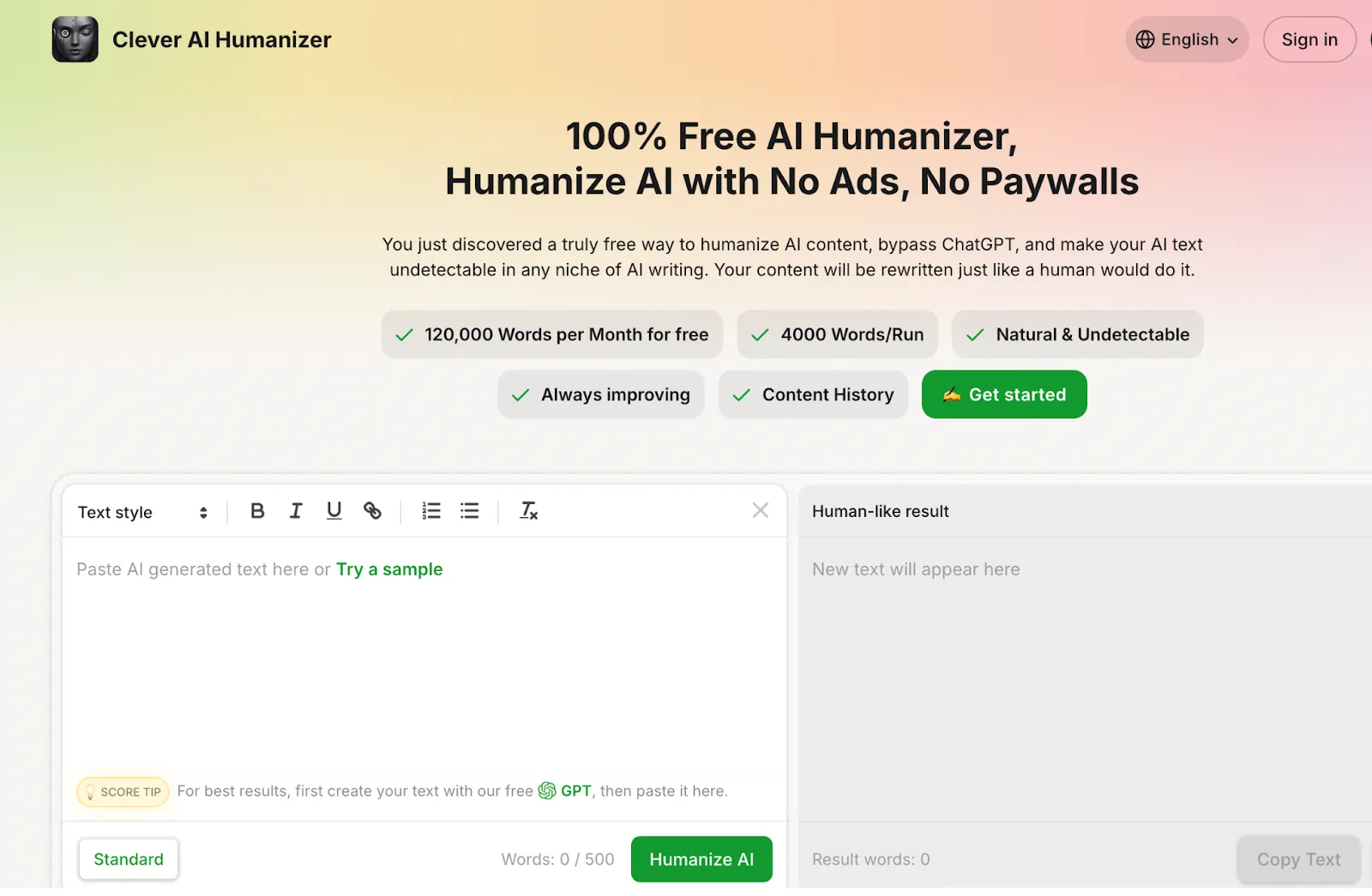
Artificial intelligence is rewriting how we create content. From blogs and essays to ad copy and SEO articles, AI writing tools are now everywhere. But there’s a problem many people notice right away: AI-generated text often sounds stiff, predictable, or just not quite human.
That’s where the idea of humanising AI text comes in. Modern tools can transform robotic-sounding paragraphs into something natural and genuine. In this guide, we’ll explore how these tools work, why they matter, and which app does it best.

If you’ve ever read AI-generated content, you might have noticed it feels off. The flow is too smooth, the emotions are shallow, or the tone doesn’t match real human writing. That small difference makes a big impact.
For bloggers, it’s about trust. Readers want to feel connected to the writer behind the words. For SEO specialists, Google’s algorithms now value authentic, helpful, and natural content more than ever. Even businesses using AI-generated copy risk losing credibility if the tone feels artificial.
In short, humanising your text is not just a nice touch; it’s a must for staying relevant and believable online.
AI humaniser tools are designed to do one thing: make AI text sound human. They don’t just rewrite words; they adjust tone, rhythm, and sentence flow. These tools detect robotic patterns and replace them with language that feels lived-in and expressive.
They’re especially useful for anyone using ChatGPT or similar models. Instead of spending hours manually editing AI drafts, users can now run their text through an AI humaniser and get a natural rewrite in seconds.
Some tools even claim to bypass AI detectors by rephrasing content to mimic human unpredictability. That’s useful for creators who want to maintain authenticity without triggering detection systems designed to detect ChatGPT-generated content.
Among the many apps available, Clever AI Humaniser stands out as one of the most effective and easy-to-use platforms for refining AI text. It’s part of a growing family of tools like the Clever Free AI Humanizer, which focuses on quality and accessibility.

Unlike traditional paraphrasers, Clever AI Humaniser focuses on voice and tone rather than just vocabulary. It blends linguistic patterns found in human writing, giving every sentence a more realistic rhythm.
The app is entirely web-based and free to use, which makes it accessible for writers, marketers, and students alike. Its key goal is simple: help users make AI text sound human without losing meaning or structure.
A clever AI Humaniser doesn’t just spin words. It analyses the structure of your text and recreates it using a variety of natural sentence patterns. Think of it as a skilled editor who smooths the rough edges left by AI.
Here’s what sets it apart:
It’s ideal for turning ChatGPT drafts, SEO articles, or social media posts into natural prose that connects better with readers.
Using Clever AI Humaniser is straightforward. Here’s a quick walkthrough:
That’s it. No downloads, no complicated setup, just instant results. You can use it for any kind of writing, from essays to business blogs.
Here’s a quick comparison of some popular tools that aim to humanise AI text:
Tool
Features
Free Plan
Bypass AI Detectors
Ease of Use
Clever AI Humaniser
Realistic tone, natural rhythm, preserves meaning
Yes
Yes
Very Easy
GPTZero Rewrite
Focuses on detection & readability
Limited
Partial
Moderate
Undetectable.ai
Bypasses detectors, paid only
No
Yes
Easy
Humanize.io
Paraphrases text, not tone-focused
Yes
No
Simple
Several features make Clever AI Humaniser the best AI humaniser app today.
The app also evolves constantly, keeping up with how AI detectors and writing algorithms change.
AI detectors like GPTZero, Originality.ai, and Turnitin use machine learning to identify AI-written text. They analyse sentence structure, word frequency, and overall predictability.
While these systems are useful for academic and professional settings, they can also mistakenly flag genuine writing. That’s why using a reliable ChatGPT text humaniser can help balance authenticity with creativity.
By passing these checks, writers can confidently publish their content knowing it reads and scores as human-written.
The best humanised content doesn’t just fool detectors; it connects emotionally. Here are a few principles worth following:
Even when using AI tools, these touches make your message sound alive.
AI will keep evolving, but readers will always prefer genuine voices. Tools like Clever AI Humaniser make that possible; they bridge the gap between efficiency and authenticity.
Whether you’re writing a blog, optimising SEO content, or refining business communication, taking a few seconds to humanise AI text can make all the difference.
It’s not just about bypassing AI detectors. It’s about building trust, creating engagement, and making sure your words truly sound like you.
AI-generated text often lacks the natural rhythm and emotional connection found in human writing. Humanising it helps you build trust with your readers, improves engagement, and ensures your content feels authentic and credible.
An AI humaniser analyses your text for robotic patterns, predictable sentence structures, and unnatural phrasing. It then rewrites the content to have a more varied and conversational flow, adjusting the tone and rhythm without changing the original meaning.
Yes, it can. Search engines like Google prioritise content that is helpful, reliable, and created for people. By making your AI-generated articles sound more natural and authoritative, you improve the reader experience, which is a positive signal for SEO.
Not at all. The process is designed to be very simple. You just copy the text from your AI writer, paste it into the humaniser tool on the website, and click a button to get the refined output almost instantly.
While no tool can offer a perfect guarantee, high-quality humanisers are very effective at rewriting text to bypass common AI detectors. They do this by introducing the kind of linguistic variety and unpredictability that is characteristic of human writing.